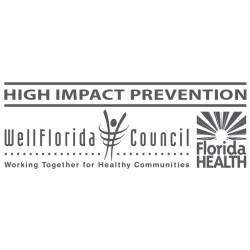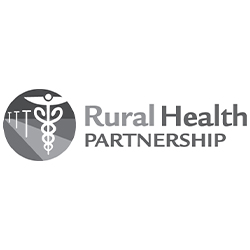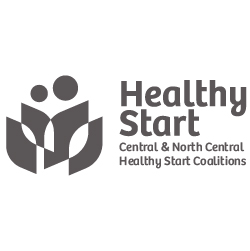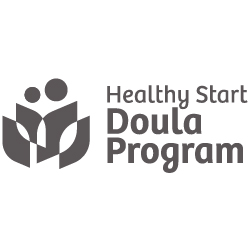Improving Health Challenges for Rural Youth
By Morris Sherman, Safe Routes to School coordinator at WellFlorida Council
The youth in rural communities face various challenges related to health and safety. Rural youth face higher levels of physical inactivity and obesity than urban counterparts (1, 2), higher injury and fatality rates from collisions (3, 4), and poorer infrastructure for safe and convenient walking and biking (5). WellFlorida Council, a health planning organization in North Central Florida is implementing a program called Safe Routes to Schools to combat these prevalent issues.
In 1969, nearly 50% of all rural, suburban, and urban elementary and middle school students walked or biked to school. Now, only 13% of children get to school by foot or pedal (6). Fewer students receiving the simple daily exercise of walking or bicycling to school can be a contributing factor to the rise in obesity (7). The CDC recommends children do 1 hour or more of physical activity per day (8). A large portion of that activity can be achieved from simply walking or biking to school.
In rural areas, county roads and state highways are the paths to schools and bus stops. Many of these roads lack active-transportation friendly infrastructure, i.e. bike lanes, sidewalks, street lamps, crosswalks, or stop lights. This causes students to come in contact with fast and frequently large vehicles when heading to school or bus stops. If this contact results in injury, it is likely to be more severe or even fatal when compared to a crash involving slower speeds.
WellFlorida Council and its Safe Routes to School Program are combating these issues by implementing the following strategies:
• Training elementary and middle school PE teachers on Florida’s bicycle and pedestrian safety curriculum, developed by FDOT.
• Certifying teachers and community organizers to be helmet fitters, allowing them to order FREE helmets from UF for schools and community events.
• Creating Remote Drop-Off Locations/Walking School Busses (busses drop students off at a safe, nearby location to walk with an adult as a group to school).
• Promoting Walk-to-School Bus Stops (creating slightly further, centralized bus stops for students to travel to safely via foot or pedal).
• Starting Frequent Walker Programs (a before school walking program to promote and instill appreciation for walking and its health benefits).
• Promoting Walk or Bike to School Days (where it is already safe to walk and bike to school).
• Participating in community and school-based events to promote the health benefits of being active and the importance of being safe.
Not only can these strategies help to increase physical activity, awareness, and safety, but schools that have implemented a Safe Routes to Schools Program have reported lower truancy numbers, a reduction in student disruptions, and an increase in academic achievement (9). With the introduction of Safe Routes to Schools Program, WellFlorida Council hopes to assist rural areas in creating safer, healthier, more active communities.
Morris Sherman is the Safe Routes to School Coordinator at WellFlorida Council. To schedule a teacher or community training, inform of an event, or collaborate on projects in this region contact him at msherman@www.wellflorida.org or 352-313-6500 x114. The Safe Routes to Schools Program out of WellFlorida Council services Alachua, Bradford, Columbia, Dixie, Gilchrist, Hamilton, Lafayette, Levy, Putnam, Suwannee and Union Counties.
This article also appeared on the Florida Rural Health Association’s blog.
References
1. Lutfiyya MN, Lipsky MS, Wisdom-Behounek J, Inpanbutr-Martinkus M. Is rural residency a risk factor for overweight and obesity for U.S. children? Obesity. 2007;15(9):2348–2356. http://onlinelibrary.wiley.com/doi/10.1038/oby.2007.278/epdf.
2. PD Patterson, CG Moore, JC Probst, JA Shinogle. Obesity and Physical Inactivity in Rural America. The Journal of Rural Health, Volume 20, Issue 2, pages 151–159, March 2004.
3. FHWA, Highway Safety Information System, Factors Contributing to Pedestrian and Bicycle Crashes on Rural Highways, http://www. fhwa.dot.gov/publications/research/safety/10052/10052.pdf (25% of nationwide pedestrian and bicycle fatal and injury collisions occur on rural highways); see also Rural Health, “Healthcare disparities & barriers to healthcare,” (2010), http://ruralhealth.stanford.edu/healthpros/factsheets/disparities-barriers.html#sthash.BLZ6kJrZ.dpuf (rural roads see one-third of motor vehicles collisions, but two–thirds of motor vehicles deaths).
4. JB Moore, SB Jilcott, KA Shores, KR Evenson. A qualitative examination of perceived barriers and facilitators of physical activity for urban and rural youth. Health Educ. Res. (2010) 25 (2): 355-367.doi: 10.1093/her/cyq004.
5. “Transportation Alternatives (TA) Set-Aside Implementation Guidance.” May 13, 2016. Accessed June 08, 2016. http://www.fhwa.dot. gov/environment/transportation_alternatives/guidance/guidance_2016.cfm#Allocations.
6. The National Center for Safe Routes to School (2011). How Children Get to School: School Travel Patterns from 1969 to 2009, http://saferoutesinfo.org/sites/default/files/resources/ NHTS_school_travel_report_2011_0.pdf.
7. Fryar CD, Carroll MD, Ogden CL, Prevalence of overweight and obesity among children and adolescents: United States, 1963-1965 through 2011-2012. Atlanta, GA: National Center for Health Statistics, 2014.
8. Youth Physical Activity Guidelines Toolkit. (n.d.). Retrieved from https://www.cdc.gov/healthyschools/physicalactivity/guidelines.htm.
9. Martinez-Gomez D, Ruiz JR, Gomez-Martinez S, et al. “Active Commuting to School and Cognitive Performance in Adolescents.” Archives of Pediatric and Adolescent Medicine, 165(4): 300-305, 2010, http://archpedi.jamanetwork.com/article. aspx?articleid=384475.













